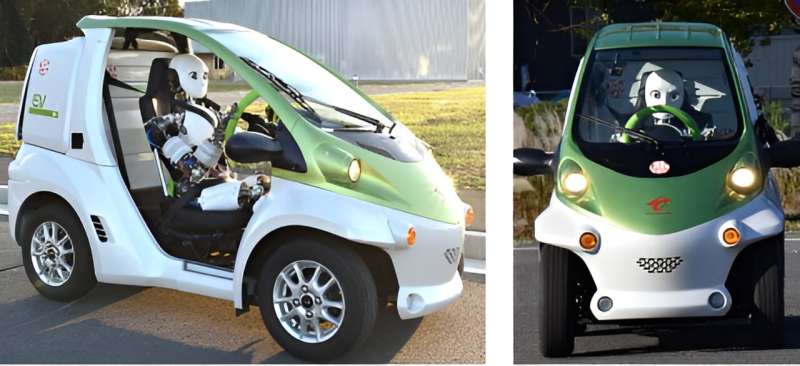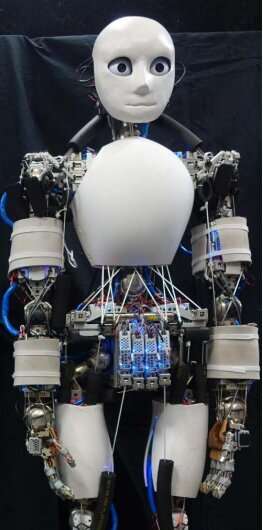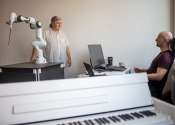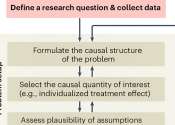
A team of roboticists at the University of Tokyo has taken a new approach to autonomous driving—instead of automating the entire car, simply put a robot in the driver’s seat. The group built a robot capable of driving a car and tested it on a real-world track. They also published a paper describing their efforts on the arXiv preprint server.
Virtually all efforts to build a self-driving car have focused on making the car itself autonomous—humans sit in the passenger seat or in the back. These efforts involve adding a host of sensors in addition to processing power. They have also been met with mixed results.
In this new effort, the research team wondered if it might not be easier and cheaper simply to build a robot that can be taught how to drive a car and put it in the driver’s seat of a normal vehicle. To find out if that might be possible, they built such a robot and tested it on a track at the University of Tokyo’s Kashiwa Campus.
The robot is named Musashi and it was designed to operate in much the same way as a human car driver. To that end, the researchers created what they describe as a “musculoskeletal humanoid”—a robot with two arms and two legs, with feet and hands, a torso, neck and head.

They also gave it movable eyes, each equipped with a high-resolution camera. The jointed arms have hands with five digits, and the feet have “grippiness” to ensure precise control of the gas pedal and brake. The robot has a computer, of course, with software for training and to serve as the brains of the robot when driving.
After building their robot, the research team put it in a small electric car and then sent it off for some test driving. In addition to simply driving around, the robot was tested on its ability to recognize and respond to objects in its path, including humans.
The team reports that initial testing was encouraging, though they acknowledge that Musashi is a long way from being ready to drive on a public road.

They plan to continue their work to find out if improvements would lead to a robot being able to drive better, or at least more safely, than the average human being.
More information:
Kento Kawaharazuka et al, Toward Autonomous Driving by Musculoskeletal Humanoids: A Study of Developed Hardware and Learning-Based Software, arXiv (2024). DOI: 10.48550/arxiv.2406.05573
© 2024 Science X Network
Researchers wonder what if you just put a robot in the driver’s seat instead of automating the car? (2024, June 14)
retrieved 15 June 2024
from https://techxplore.com/news/2024-06-robot-driver-seat-automating-car.html
part may be reproduced without the written permission. The content is provided for information purposes only.










